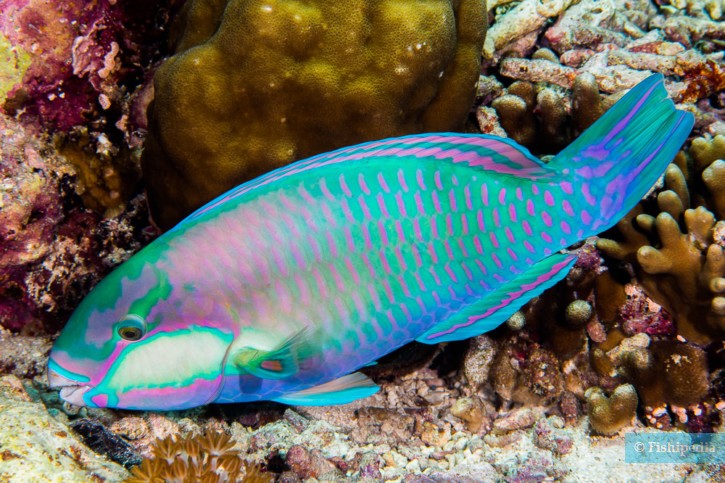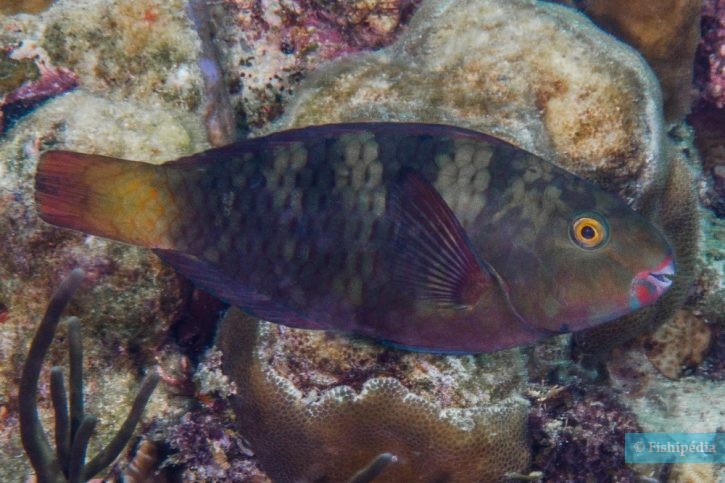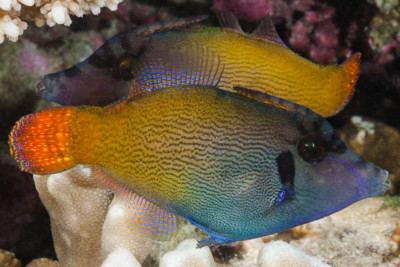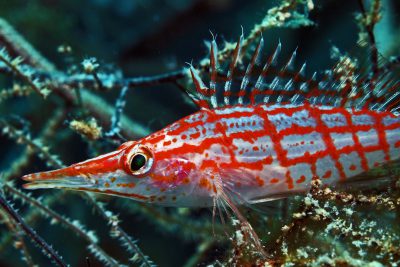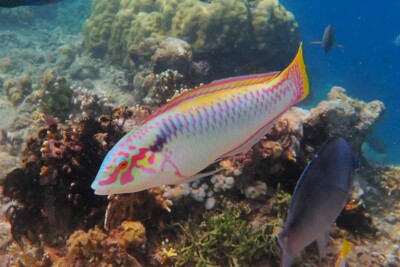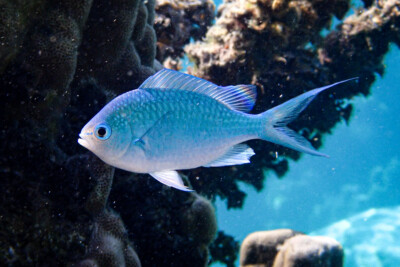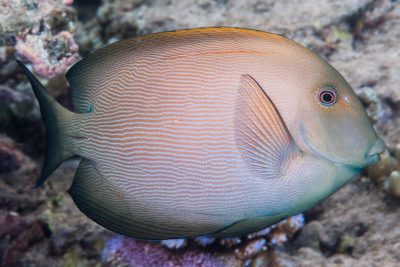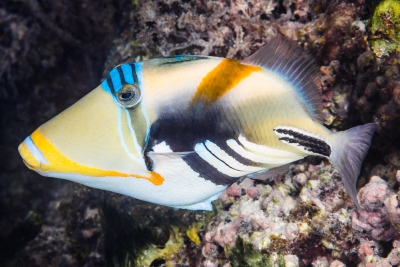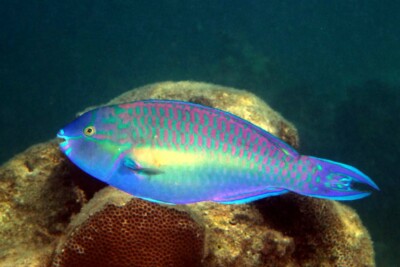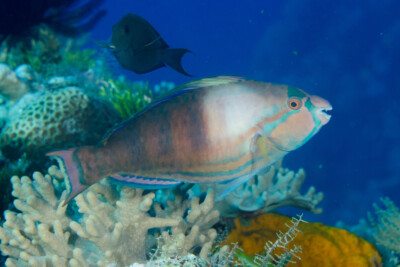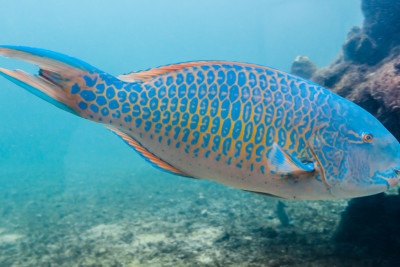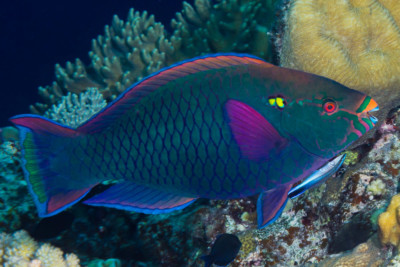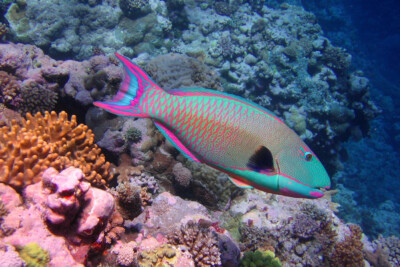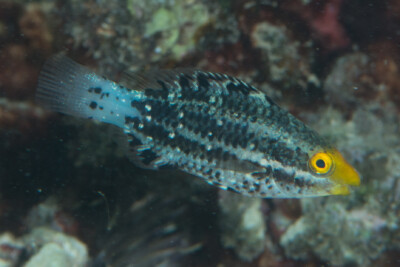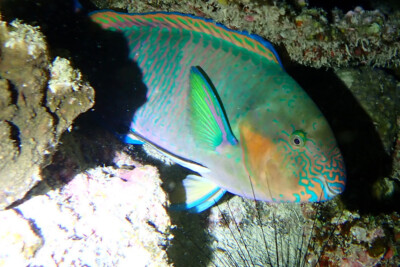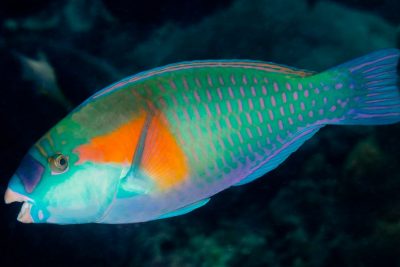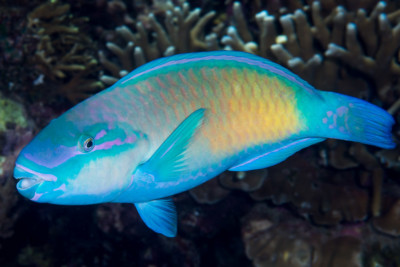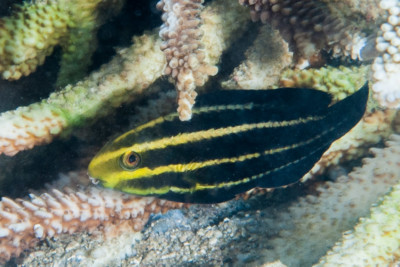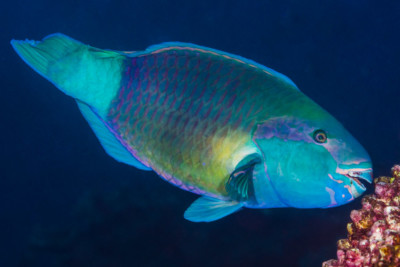bleeker's parrotfish
| Scientific name | Chlorurus bleekeri |
|---|---|
| Descriptor | De Beaufort |
| Year of description | 1940 |
| IUCN category (World) | LC |
| Family | Scaridae |
| Genus | Chlorurus |
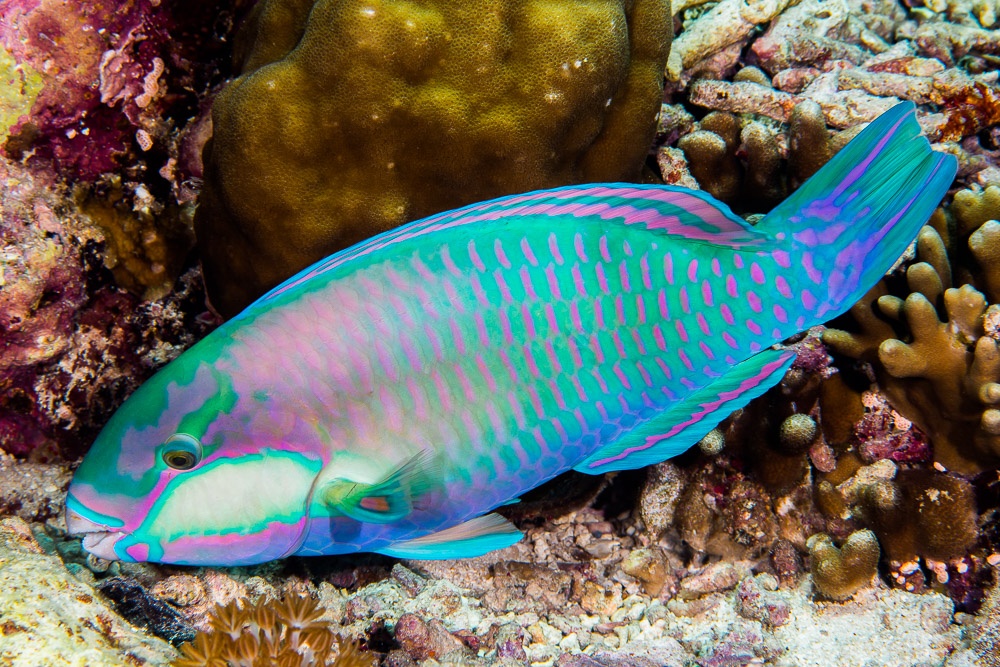

Introduction
Chlorurus bleekeri is a tropical fish native to the Indo-Pacific region. It is found from the East Indian Ocean to the Great Barrier Reef. It is a relatively common inhabitant of shallow waters in reef zones and lagoons.
Who is it?
Morphology
-
Average size40 cm
-
Maximum size50 cm
-
Average size40 cm
-
Maximum size50 cm
How to recognize This fish ?
Chlorurus bleekeri is characterized by its dorsal spine, and lips that do not cover the teeth. Young individuals (Initial Phase) have a dark brown body with light bands on the sides.
In the terminal phase, they have a large white spot bordered by a thin green line, more or less visible depending on the individuals.
They resemble the Chlorurus troschelii and Chlorurus capistratoide. In the initial phase, the distinction is difficult.
It is certainly the most abundant species of Chlorurus in the Western Pacific.
Sexual dimorphism
Males are green with some pink scales. Females have a dark brown body with 3 to 4 light bands on the flank.
Behaviour & Life cycle
-
dietherbivorous
-
Sociabilityliving in a group or alone
-
territorialNo
-
Way of livingdiurnal
Females are found in small groups, sometimes accompanied by other species while males roam the corals alone. These fish feed on algae that they nibble on the substrate.
Reproduction
-
Reproductionovipare qui pond en eau libre
Chlorurus bleekeri is an oviparous fish that spawns in open water. Spawning occurs in pairs.
Harmless species
This species does not represent any particular threats to humans when encountered in its natural environment.
Origin and distribution
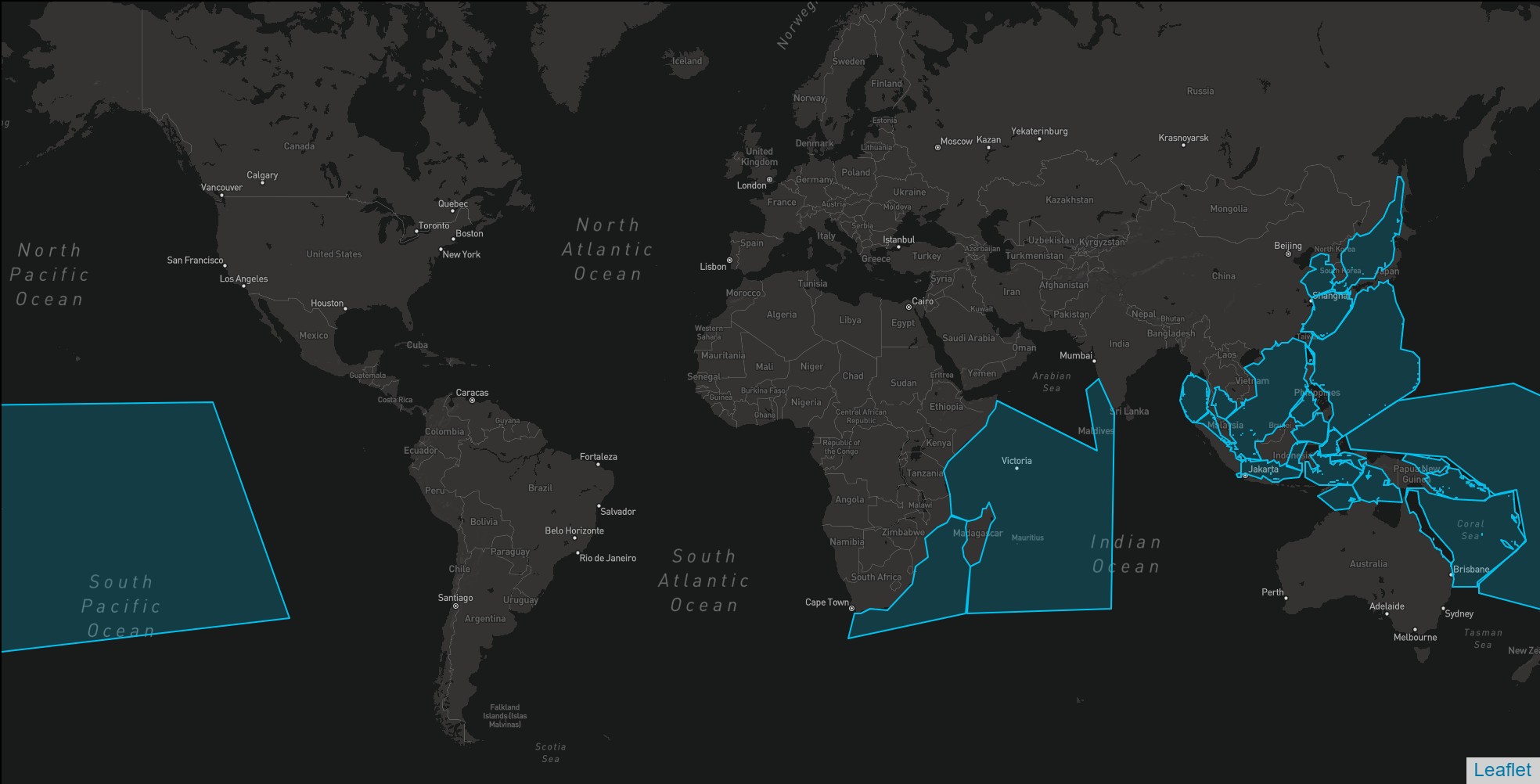
Conservation status of populations (IUCN)
What is its habitat?
Natural environment characteristics
-
Depth3 - 35 m
Biotope presentation
This species is found up to 35 meters. However, it appears to be more common at shallow depths (less than 10 meters).
Species of the same biotope
Fishkeeping
Not recommended
We do not recommend keeping this species in an aquarium. It has unpredictable needs which, if not met, generate significant stress, potentially leading to a shorter life expectancy, an interruption of its growth or the development of pathogens.
To go further
Sources & Contributions
Participation & Validation
The Fishipedia team and specialist contributors are committed to providing high-quality content. However, although the information comes from scientific sources or testimonials from specialists, the cards may contain inaccuracies.

Alexandre Dumaine

Benoit Chartrer

Marc Raggi
Translation
Translation done with the valuable contribution of our translators, who make this information available to a wider audience. We sincerely thank them for their commitment.
Bibliographic references
A Review of Parrotfishes (Perciformes: Scaridae) of Taiwan with Descriptions of Four New Records and One Doubtful Species - Yun-Chih Liao - Kwang-Tsao Shao - I-Shiung Chen - Zoological Studies - 2004.
Studies on the Reef-Dwelling Fishes of India - Parrotfishes - R.P. Barman - S.S. Mishra - Zoological survey of India - 2005.
The functional morphology, systematics and behavioural ecology of parrotfishes (family Scaridae) - D.R. Bellwood - James Cook University - 2009.
Life histories predict vulnerability to overexploitation in parrotfishes - Brett M. Taylor - Peter Houk - Garry R. Russ - J. Howard Choat - Coral Reefs - 2014.
Scientific partners
Tags
Species of the same family
Same genus
Species of the same biotope
